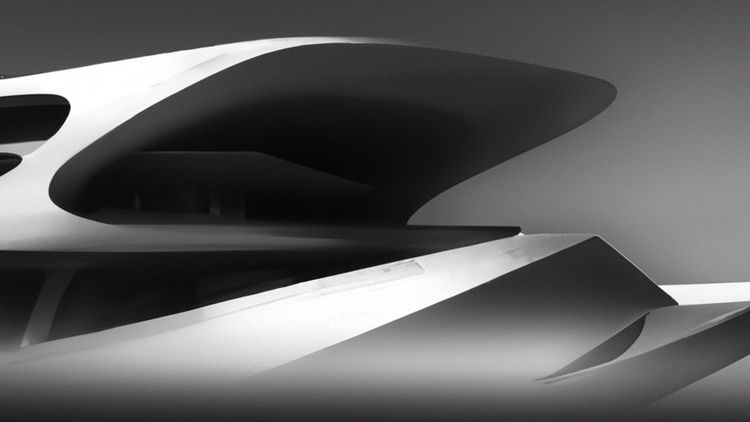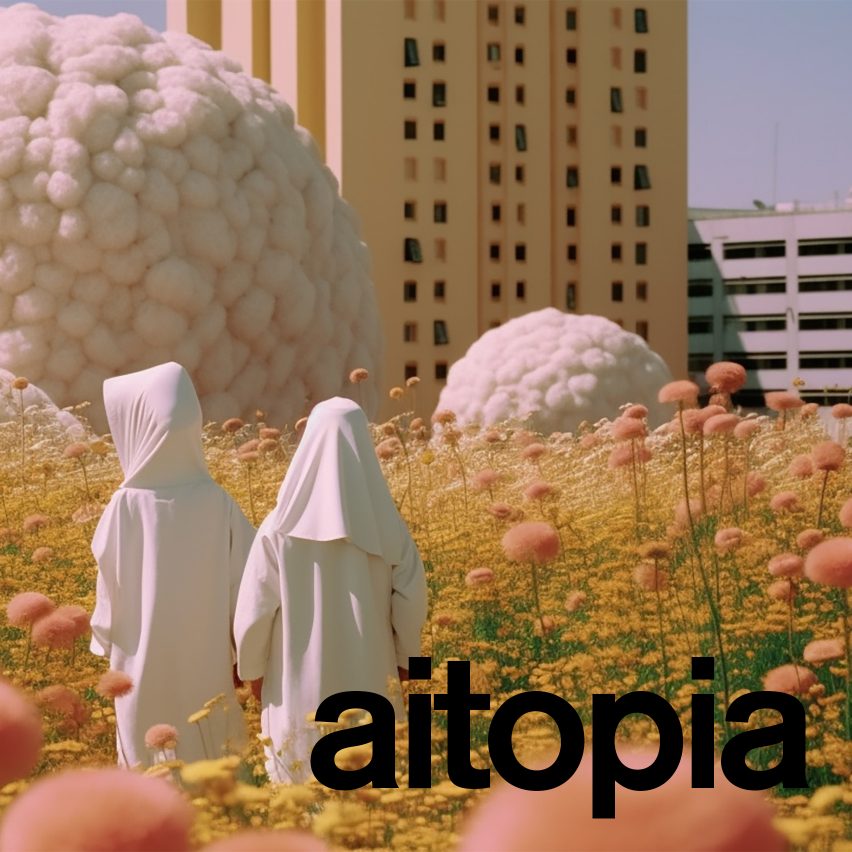"I am not at all worried about facing the newly empowered competition enabled by AI"

Architects ought to welcome AI instead of approaching it with doubt or dread, asserts Patrik Schumacher, the principal of Zaha Hadid Architects.

Ever since Open AI introduced DALL-E 2 to early users, such as Zaha Hadid Architects (ZHA), approximately a year and a half ago, the field of architecture, as well as various other design fields and artistic careers, have been greatly impacted by this and similar AI technologies.
These latest AI systems have experienced unparalleled rates of adoption, and the excitement surrounding them is well-founded. Users of these systems are experiencing a remarkable surge in both productivity and ingenuity.
Artificial intelligence has revolutionized the field of architecture.
In response to critics like Oliver Wainwright, The Guardian's architecture critic, who believe that this can be easily dismissed as superficial since it only involves generating images, it's important to remember that a picture can convey a wealth of information. These meaningful images allow us to construct a cohesive spatial arrangement and also gain insights into the physical structure and material representation of the building.
Certainly, the challenging skill of fostering and choosing must be acquired and honed in order to achieve compelling outcomes. Individuals who fail to grasp the significance of effective visual communication in the societal role of architecture have overlooked a crucial aspect of architectural history and theory. My argument is strongly supported by Kevin Lynch's timeless masterpiece, The Image of the City, which I have extensively expanded upon in my works on the study of architectural experiences and signs.
The picture holds significant value. Nevertheless, ZHA, along with our field as a whole, also embraces and actively puts resources into a wider understanding of AI that surpasses the neural networks' method.
I began my architectural studies at Stuttgart University precisely four decades ago. Back then, the field of artificial intelligence was still in its early stages. Nevertheless, within the realm of architecture, there were already endeavors to explore generative computational methods. These pioneers, such as George Stiny from UCLA/MIT, Horst Rittel and Frei Otto from Stuttgart University, Bill Hillier from the Bartlett, and John Frazer from the Architectural Association, were individuals I was fortunate enough to have a connection with or collaborate with firsthand.
Even though neural networks existed during that time, the mentioned pioneers created intelligent generative techniques using explicit theory-based programming (as well as evolutionary algorithms) for organizational-functional optimization, even without the vast amount of data available today.
At ZHA, we are dedicating resources to long-term research and development initiatives and teams within this extensive field. We particularly emphasize the development of both creative and analytical tools for spatial planning, which includes incorporating machine learning tools. Additionally, we are undertaking agent-based occupancy simulations using gaming artificial intelligence. We are committed to writing unique code as we strive to create powerful design optimization software that prioritizes social functionality.

I consistently embrace rivalry as a stimulant for personal growth.
Lately, we have started a research project with the goal of creating a game-based approach and set of tools that will assist in urban development and community building. These innovative tools not only make our work more productive and efficient, but they also improve the overall quality of our professional services, allowing for new works and insights that were previously impossible.
Regarding the latest surge of artificial intelligence tools based on big data, concerns have been expressed about the potential impact on the field of architecture. It has been suggested that AI could render numerous jobs in architecture obsolete, or even completely replace and diminish the value of our profession.
I don't have this concern. In the past, when CAD and CGIs were introduced, they brought about significant improvements in productivity. These gains were used to create higher quality work and provide clients with more choices, ultimately leading to better designs and decision-making. I predict that we will see a similar outcome with the implementation of AI.
The cost of architectural design is a small portion compared to the total expenses involved in constructing a new building. Cutting corners on design fees doesn't make sense, but investing in more creativity and design options is highly beneficial. Following economic cost-benefit analysis, the percentage of design fees in relation to the overall project costs has been rising in recent years, and I anticipate this trend to continue, particularly as we strive for more innovation and the introduction of new and improved capabilities.
Returning to the present hype surrounding generative AI focused on images, as everyone's imaginative ability is enhanced by AI, the rivalry in creative design becomes more intense. Numerous imitators emerge and can be challenging to discern from the original. Nevertheless, ensuring high-quality execution within time constraints and budgetary limitations is considerably more difficult to duplicate. Hence, it remains relatively effortless for us to sustain our overall competitive advantage.
However, I have absolutely no concerns about encountering the recently empowered rivalry facilitated by AI in relation to front-end design. I constantly embrace competition as a stimulant for enhancing my own skills.
I not only care about the progress of ZHA, but also the progress of the field of architecture.
From the start, we have enthusiastically adopted these innovative tools to enhance our own abilities. ZHA holds a special position as these versatile systems have incorporated more images from our work than any other architect. As a result, we are able to authentically and inventively delve into our own artistic style using these systems.
As we shamelessly carry out this task, we are also creating our unique neural-network systems, fine-tuning Stable Diffusion using our project-image datasets, and customizing it to meet our architectural requirements. Currently, we are experimenting with different training approaches.
Additionally, we are developing fresh interface features and capabilities. We incorporate limitations and checks that empower us to guide the outcome through settings and specific design inputs. Furthermore, we can construct the output gradually and modify certain aspects while maintaining consistency in others. By utilizing project-specific training datasets, we can optimize the outputs to better suit the needs of each project. These models are executed on our dedicated server infrastructure. Our upcoming objective is to generate collections of images (such as front/back, outside/inside) that collectively illustrate a unified design concept.
Here are a few clues that suggest the path we are taking in our AI research and development. Our focus is on enhancing our abilities and staying ahead of the competition. We aim to achieve quick outcomes as the field is rapidly evolving. Additionally, we are partnering with universities to explore the challenging realm of 3D AI, which is considered the ultimate goal.
This marks only the start, even though the emerging abilities are already becoming fascinating. I believe it is crucial, not just for ZHA, but for the field of architecture overall, to not just use generative AI tools as consumers, but to actively participate in creating discipline-specific variations of these tools.
As per usual, my focus extends beyond just the success of ZHA, to include the prosperity of architecture, the constructed surroundings, and their innovative impact on societal advancement. It encompasses the overall growth of humanity and is truly exhilarating.
Patrik Schumacher holds the position of head at the architectural firm Zaha Hadid Architects.
ZHA crafted the visual employing DALL-E 2.
If you're a fan of reading interviews, opinions, and features on Dezeen, then you should consider signing up for Dezeen In Depth. This monthly newsletter, delivered on the final Friday of every month, offers a convenient hub where you can dive into the captivating design and architectural tales that lie beneath the surface of the headlines.
This blog post is a segment of Dezeen's AItopia series, which delves into the effects that artificial intelligence (AI) has on design, architecture, and mankind, in both the present moment and forthcoming times.









































